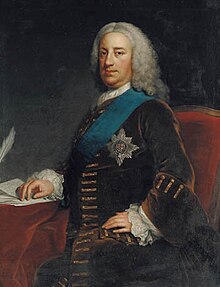
Charles Edward Louis John Sylvester Maria Casimir Stuart was the elder son of James Francis Edward Stuart, grandson of James VII and II, and the Stuart claimant to the thrones of England, Scotland and Ireland from 1766 as Charles III. During his lifetime, he was also known as "the Young Pretender" and "the Young Chevalier"; in popular memory, he is known as Bonnie Prince Charlie.

William Cavendish, 3rd Duke of Devonshire, was a British nobleman and Whig politician who sat in the House of Commons from 1721 to 1729 when he inherited the Dukedom.

The Battle of Prestonpans, also known as the Battle of Gladsmuir, was fought on 21 September 1745, near Prestonpans, in East Lothian, the first significant engagement of the Jacobite rising of 1745.

Clan Murray is a Highland Scottish clan. The chief of the Clan Murray holds the title of Duke of Atholl. Their ancestors were the Morays of Bothwell who established the family in Scotland in the 12th century. In the 16th century, descendants of the Morays of Bothwell, the Murrays of Tullibardine, secured the chiefship of the clan and were created Earls of Tullibardine in 1606. The first Earl of Tullibardine married the heiress to the Stewart earldom of Atholl and Atholl therefore became a Murray earldom in 1626. The Murray Earl of Atholl was created Marquess of Atholl in 1676 and in 1703 it became a dukedom. The marquess of Tullibardine title has continued as a subsidiary title, being bestowed on elder sons of the chief until they succeed him as Duke of Atholl.

The First Siege of Carlisle was an important event of the 1745–1746 Jacobite rising. Jacobite forces loyal to Prince Charles Edward Stuart captured the city of Carlisle and Carlisle Castle on 14–15 November 1745.

The Clifton Moor Skirmish took place on the evening of Wednesday 18 December during the Jacobite rising of 1745. Following the decision to retreat from Derby on 6 December, the fast-moving Jacobite army split into three smaller columns; on the morning of 18th, a small force of dragoons led by Cumberland and Sir Philip Honywood made contact with the Jacobite rearguard, at that point commanded by Lord George Murray.

Donald Cameron of Lochiel, popularly known as the Gentle Lochiel, was a Scottish Jacobite, soldier and hereditary chief of Clan Cameron, traditionally loyal to the exiled House of Stuart. His support for Charles Edward Stuart proved pivotal in the early stages of the 1745 Rising. Lochiel was among the Highlanders defeated at the Battle of Culloden, and thereafter went into hiding before eventually fleeing to France.
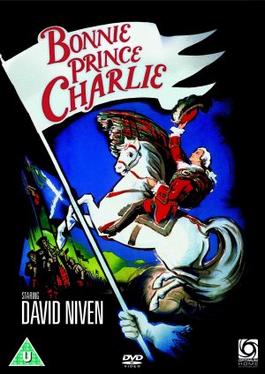
Bonnie Prince Charlie is a 1948 British historical film directed by Anthony Kimmins for London Films depicting the 1745 Jacobite Rebellion and the role of Bonnie Prince Charlie within it. Filmed in Technicolor, it stars David Niven, Jack Hawkins, and Margaret Leighton.
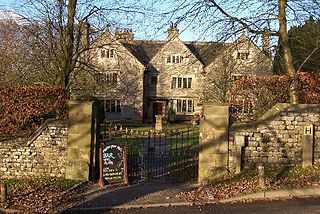
Hartington Hall is a much altered and extended 17th-century manor house at Hartington, Derbyshire, now a youth hostel.

The Jacobite rising of 1745, also known as the Forty-five Rebellion or simply the '45, was an attempt by Charles Edward Stuart to regain the British throne for his father, James Francis Edward Stuart. It took place during the War of the Austrian Succession, when the bulk of the British Army was fighting in mainland Europe, and proved to be the last in a series of revolts that began in March 1689, with major outbreaks in 1708, 1715 and 1719.
Dudley Bradstreet (1711–1763) was an Irish adventurer and secret government agent. During the Jacobite rising of 1745, Bradstreet was employed by government officials to act as a spy among the rebels. His description of a "third force" of 9,000 men in Northampton ready to fight the Scots is credited with persuading Bonnie Prince Charlie's army to turn back at a council of war in Derby in 1745, effectively ending the Jacobite cause.

The siege of Inverness took place in February 1746 and was part of the Jacobite rising of 1745.

Midwinter: Certain travellers in old England is a 1923 historical novel by the Scottish author John Buchan. It is set during the Jacobite rising of 1745, when an army of Scottish highlanders seeking to place Charles Stuart onto the English throne advanced into England as far South as Derby. The Prince, otherwise known as "Bonnie Prince Charlie", the grandson of the ousted King James II, required men and money from English Jacobite sympathisers, and the novel imagines why those were not forthcoming from landowners in the Western counties and Wales. It purports to sheds light on Samuel Johnson's previously unknown activities during that period.
The Independent Highland Companies were irregular militia raised from the Scottish clans of the Scottish Highlands by order of the British government between 1603 and 1760 in order to help keep the peace and enforce the law in the Highlands and were recognized as such by the government. The officers of the Independent Highland Companies were commissioned as officers of the British Army but the Independent Companies were not recognized as official regiments of the line of the army. The Independent Highland Companies were the progenitors of the Highland Regiments of the British Army that began when ten Independent Highland Companies were embodied to form the Earl of Crawford's Highland Regiment that was numbered the 43rd Regiment of Foot in 1739.
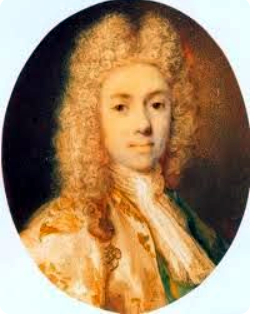
William Murray, Marquess of Tullibardine was a Scottish nobleman and Jacobite who took part in the rebellions of 1715, 1719, and 1745.

The Skirmish of Keith was a conflict that took place on the 20 March 1746 in Keith, Moray, Scotland and was part of the Jacobite rising of 1745.
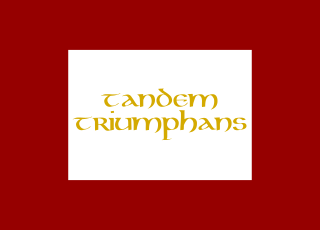
The Jacobite Army, sometimes referred to as the Highland Army, was the military force assembled by Charles Edward Stuart and his Jacobite supporters during the 1745 Rising that attempted to restore the House of Stuart to the British throne.

John Gordon of Glenbucket was a Scottish Jacobite, or supporter of the claim of the House of Stuart to the British throne. Laird of a minor estate in Aberdeenshire, he fought in several successive Jacobite risings. Following the failure of the 1745 rising, in which he served with the rank of Major-General, he escaped to Norway before settling in France, where he died in 1750.
The Pilsbury family is a British family of Anglo-Norman origins. The family rose to its highest prominence within the counties of Derbyshire and Staffordshire within the United Kingdom and Minnesota, New England and Massachusetts within the United States of America.

An Incident in the Rebellion of 1745 is an oil painting, by the Anglo-Swiss artist David Morier. It is part of the art collection of the British royal family. The painting depicts a scene during the 1746 Battle of Culloden, in which a group of Jacobite Army troops charge against a line of government soldiers.
